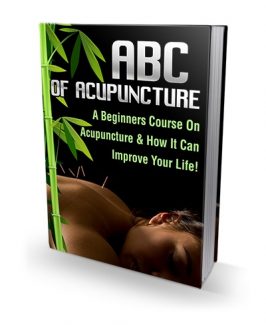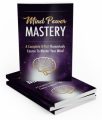 License Type: Master Resell Rights
License Type: Master Resell Rights  File Type: ZIP
File Type: ZIP
 SKU: 61988
SKU: 61988  Shipping: Online Download
Shipping: Online Download
Sample Content Preview
Introduction – What Is Acupuncture?
Firstly welcome to our beginners guide on Acupuncture and thank you for joining me as we embark on a quick journey of discovery into this sometimes mysterious art. In this first introductory chapter we will be going over a few key points of Acupuncture and exactly what you need to know, upon which we will delve deeper into in the coming chapters. Let’s get started…
First and foremost, Acupuncture is a well-known alternative to mainstream medicine that originated from China. It is a branch of traditional Chinese medicine that dates back thousands of years, and is a widely accepted alternative form of medicine in the Western healthcare industry.
Today, it is widely used to treat different specific ailments such as chronic back ache and headaches, osteoarthritis, postoperative pain and vomiting, allergies, cancer-related conditions, stroke, and even infertility. It is a common substitute for patients that are looking for less aggressive types of treatment, but is not recommended to be used as the primary treatment in any kind of illness. Most places that practice acupuncture are found in the US, UK, and Asia, and are mostly done by private practitioners.
How It Works
The word acupuncture comes from the Latin words acus and punctura, the former meaning needle, and the latter meaning to puncture. The procedure is literally the act of puncturing the skin with the use of fine needles with the aim of stimulating the body’s acupuncture points.
The needles may vary in size depending on the area it will be placed, and patients are asked to lie down as the needles are carefully positioned allowing it to penetrate the skin. The penetration, however, will not be deep enough to permanently damage the skin. The procedure may last for a couple of minutes to a few hours depending on the severity of your health concern. Although it may seem painful and scary at a glance, most practitioners guarantee that there will only be minimal pain much similar to a buzzing or stinging sensation, and patients who have undergone this treatment will be able to attest to the relaxing sensation it provides.
The Principles of Acupuncture
The traditional form of acupuncture is firmly based on the principles of traditional Chinese medicine.
According to their beliefs, our bodies are filled with Qi, a life force that circulates through our body through the main organs. This same energy is then distributed to the entirety of our bodies, including the tissues, bones, nerves, and veins through channels known as meridians. These meridians can be likened to railways that easily transport Qi energy from one major organ to the other. The proper flow of Qi in our system creates a balanced environment in our bodies thus keeping us healthy. In line with this, traditional Chinese medicine believes that all diseases are caused by a certain form of imbalance whether caused by our environment or changes in our body.
In the modern age, the existences of both Qi and meridians have still not been proven by science. This has caused acupuncturists to take a different approach in explaining the process of acupuncture in relation to the treatment of pain.
A more acceptable explanation in the scientific field about how acupuncture works is the body’s release of endorphins and adenosine whenever a needle penetrates the skin. The said releases of these chemicals have been found to relieve pain and make patients feel better. The use of acupuncture can temporarily alleviate pain without having to take medication or undergo surgery. There is, however, no medical or scientific proof in its efficacy in eliminating major health conditions.
Add what you are comfortable with at your own pace. For some, that's a lot of changes right away. For others, it's one at a time. Only you truly know the answer to which way is best for you.
Well that’s a basic introduction to the world of Acupuncture, over the next few chapters we will take a more in depth look at some of the aspects mentioned above. Are you ready? Let’s go…
Chapter 1 – The History Of Acupuncture & How It Affects You
Long before the emergence of Western medicine, the Chinese have already established their own form of medicine and healing. For thousands of years, Chinese healers have continuously refined their system resulting in complex and elaborate processes aimed at channeling the proper flow of energy in our bodies to combat certain illnesses.
In this beginning chapter we will be looking at how Acupuncture came into existence from its inception to current use and then into the future.
The Roots of Acupuncture
Although the specific date when acupuncture was first used cannot be determined, it was first introduced in the “Classic of
Internal Medicine of the Yellow Emperor”, China’s earliest book on Chinese medicine dating back from 1st century BC. It is said that the teachings on this book make up the foundation of the techniques currently practiced in acupuncture today.
The Rise & Fall of Traditional Chinese Medicine
When modern medicine emerged and became widely used around the world, acupuncture and other forms of traditional Chinese medicine became out of place and lost its popularity, especially with its lack of scientific basis.
The 20th century became a slow time for acupuncture due to new healthcare treatments introduced by the Westerners. Many doctors educated and trained under western medicine pushed to ban acupuncture as well other branches of traditional Chinese medicine because of its unconventionality and lack of scientific basis.








